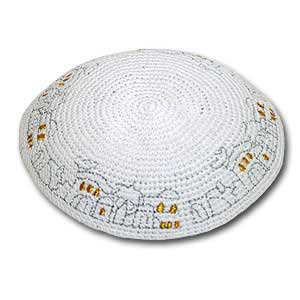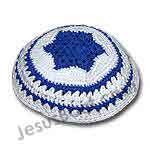Why Wear a Kippah?


When a person wears a kippah, he creates a certain responsibility to act as a G-d fearing person should act… the kippah helps him to be reminded of this. The kippah tells the world that the wearer is bound by G-d's commandments and lives his life accordingly.
Many Christians who choose to wear a kippa feel that it is a significant way to connect with the Jewish roots of their faith. It is indisputable that Jesus was born into an observant Jewish family. It was important to Him that his followers knew, understood, and followed the traditions of His Jewish roots.
 Jewish tradition holds that the kippah is worn by boys and men as an outward sign of the belief in the G-d above us and identification with the Jewish people. While some wear the kippah all the time, others choose wear his kippa only while praying, reciting a blessing, or studying Jewish religious texts. Kippot (the plural of kippa) are also expected to be worn in the synagogue, at weddings, funerals and other life cycle events. Today, some women choose to wear a kippah to confirm they too follow G-d's commandments. There is no reason a non-Jewish person cannot wear a kippah to display faithfulness to G-d and all He commands.
Jewish tradition holds that the kippah is worn by boys and men as an outward sign of the belief in the G-d above us and identification with the Jewish people. While some wear the kippah all the time, others choose wear his kippa only while praying, reciting a blessing, or studying Jewish religious texts. Kippot (the plural of kippa) are also expected to be worn in the synagogue, at weddings, funerals and other life cycle events. Today, some women choose to wear a kippah to confirm they too follow G-d's commandments. There is no reason a non-Jewish person cannot wear a kippah to display faithfulness to G-d and all He commands.
Kippot come in a variety of sizes, colors and fabrics. There are no specific rules as to how your kippah should look. There are endless choices from the plain black velvet kippah to the leather kippot decorated with sports teams’ mascots. The most popular kippah at JesusBoat.com is the knitted kippah. These are available in a variety of colors and designs. Kippot adorned with the Star of David are always a well received choice.
There is no Biblical commandment to wear the kippah. However, the first mention of wearing head coverings as commanded by G-d is noted in Exodus. It was directed that Aaron’s sons be made to wear hats of linen. The first century historian Josephus described the turbans as a strip of linen 16 cubits (24') long, which was wound around the top of the head. After being wound around, it was sewn, and then covered with a piece of fine linen to hide the seams. The end result could have looked very much like, albeit much larger, a kippah of today.

